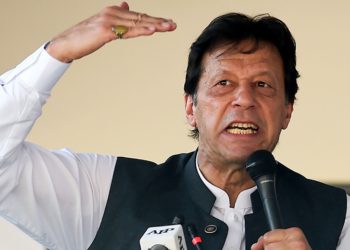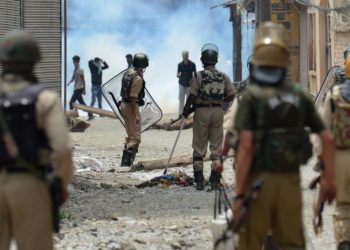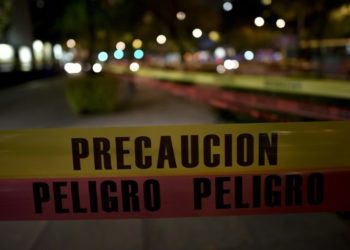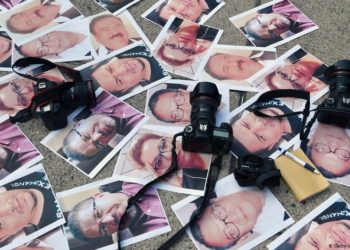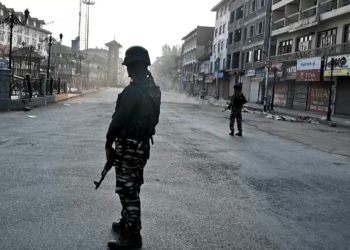SRINAGAR — On August 5, 2016, an uprising in Indian-administered Kashmir had entered its fourth week following the death of 21-year-old rebel commander Burhan Wani who was killed in an encounter with Indian security forces.
Javid Ahmed Mir, the owner and editor of the Kashmir News Network, an Urdu news agency from Kupwara district in North Kashmir, began his day just like any other. That afternoon, he received a call from a contact about a protest demonstration against Indian government that was taking place in the town of Langate.
“The caller told me that many people were injured in the protests as forces had used pellets, tear gas shells, and bullets to disperse them,” Mr. Mir told The Globe Post.
Mr. Mir rushed to the government-run hospital in the town to record the statement of the victims. He then started his journey back home, on foot, to file the story. He was shot along the way by pellet that had been fired by a security force personnel.
“While I was walking, a police jeep passed by and as I looked towards it, pellets were fired at me,” Mr. Mir said. “I felt like someone had pierced different parts of my body. Blood was oozing from my eyes, face, and chest. I can never forget that pain.”
He spent months in the hospital recuperating from the grievous injuries inflicted by the pellets. He gained partial vision in his right eye but was blinded in the left eye.
Pellet guns are a “nonlethal” weapon that were first introduced by the Indian government into the region of Kashmir in 2010 to squelch a surge of protests against Indian rule. The guns shoot a non-spherical projectile made of a malleable material, usually lead, that can inflict multiple organ injuries. Subsequent years have seen a rise in cases of people with loss of eyesight and even death due to its use from a very close range.
In September, a month after Javid was maimed by the pellets, Xuhaib Maqbool, a Srinagar based freelance photo-journalist was covering protests in Rainawari locality of the district, when a policeman aimed his pellets loaded shotgun at his face and fired, hitting him in his left eye, chest and face.
“I even showed him [the policemen] my camera, but he still shot me. It was a targeted attack on me,” Mr. Maqbool told The Globe Post.
He said it was not the first attack he had to face while performing his duties by the security forces.
“A few months before that fateful day, a security force personnel had fired a tear gas shell at me which had hit my ankle, crippling me for weeks,” Mr. Maqbool said.

Abuse by Security Forces
Journalists in Kashmir have been enduring harassment, injury, and persecution since the onset of militancy in 1989. These crimes tend to go unpunished and their perpetrators undeterred from committing future abuses.
According to data released by the International Federation of Journalists (IFJ) in December, at least 21 journalists have been killed since 1990, often in targeted killings or because of being caught in the cross-fire, while attempting to cover the conflict in Kashmir. The situation has become more dangerous for journalists since 2008, when Kashmir witnessed its first major uprising against the Indian state in the last two decades.
“Journalists and security forces are always at crossroads in a conflict zone like Kashmir,” Mr. Maqbool said. “We can’t expect security forces to hug us. They will target us because they have been given enormous powers by the government.”
According to Aquib Javeed, who is a correspondent at the Kashmir Observer, working in a conflict zone is not an easy job.
“It is very hard for journalists to cover the conflict like Kashmir where media persons often become collateral victims of clashes,” Mr. Javeed told The Globe Post. “During protests, we become soft targets of security forces as they go away with the charges by just saying that they couldn’t differentiate between protestors and journalists which is a brazen lie.”
Ad Cuts As a Way to Punish Press
On October 18, the Union Home Ministry sent a letter to various Jammu and Kashmir state authorities asking them to stop government advertisements for some media outlets. Advertisements are the biggest source of revenue for the local media that publish content which the ministry deems “highly radicalized” while glamorizing terrorists and anti-national elements.
“Publishing anti-national articles in the newspapers of the state should be strictly dealt with. Such newspapers should also not be given any patronage by way of advertisements by the state government. This may be circulated to all concerned for strict compliance,” mentions a letter accessed by the Hindustan Times.
It is not the first time that the government is systematically starving newspapers of advertisement in order to force them into submission. In October 2011, the Home Ministry cut advertisements to five Kashmir based newspapers which included English dailies, Kashmir Times, Greater Kashmir, Rising Kashmir, and Urdu newspapers Buland Kashmir and Ethlaat. The cuts came after coverage of a 2010 uprising which left 120 people, most of whom were youth, dead as a result of an intense security forces crackdown.
The International Federation of Journalists (IFJ), in a report titled “Kashmir’s Media In Peril: A Situation Report” published in December, also demonstrated how the content of publications has been impacted by the dependent relationship between the newspaper industry and the establishment, especially for economic survival.
“Pro-government publications are favored with government houses, land, and other ‘privileges’ for propagating the official line and those who do not play the game, pay a price,” the report said.
According to Sajjad Haider, Editor-in-Chief of the Kashmir Observer, the advertisement cuts by the successive governments are used to force media into submission in Kashmir.
“Advertisement from the private sector is very low due to the prevailing turmoil since last 30 years and government advertisements are the only source of revenue for the newspapers,” Mr. Haider told The Globe Post. “Also, 99 percent of media houses in Kashmir operate from the government provided accommodation. In such a scenario, the government doesn’t need to bring in other kinds of censorships as advertisement cuts is an easy tool for them to use.”
The government has also used blanket bans on channels and newspapers in order to further push the media away from publishing material that it does not like.

Bans and Suspensions
Five news channels, Gulistan TV, KBC, JK Channel, Munsiff TV, and Insaaf TV, were suspended by the government for “inciting violence” following the aforementioned protests that came after Mr. Wani’s death.
A month later, Jammu and Kashmir police officials then paid a visit to the office of the Kashmir Reader, a newspaper based in the Srinagar district, and passed along an order that was issued by the District Magistrate which called for an immediate ban on publishing the newspaper.
“The newspaper contains such material and content which tends to incite acts of violence and disturb public peace and tranquility in whole J&K particularly in Srinagar district,” the government order said.
The ban on the newspaper was lifted by the government in December 2016 after continuous solidarity protests by the local media members.
“The press freedom in Kashmir is very much restricted on account of lingering political conflict to which the state has historically used suppression as an answer,” Rameez Makhdoomi, spokesperson Jammu and Kashmir Young Journalist Association (JKYJA) told The Globe Post.
Internet Blockade
The government tends to also shutdown various parts of the Internet in order to further slow the work of journalists. An inability to access or send emails means that stories cannot be sent to media organizations outside of Kashmir. Officials justify the internet blockade by claiming that it helps to further establish law and order.
“Because the mischief mongers use the internet to spread rumors, instigate youth on social media to come on the locations and create law and order problems, so that is why the Internet is being banned,” Dr. SP Vaid, Director General of Police of Jammu & Kashmir, was quoted to have said by the Kashmir Observer.
According to internetshutdowns.in, a website which tracks incidents of internet shutdowns across India, internet services in the Kashmir Valley have been snapped 62 times in the last six years. The shutdowns can sometimes extend for months during times of crisis, such as the 2016 mass uprising.
“In the age of digitalization where everything from sending emails and doing research for a story is totally dependent on the internet, authorities are frequently imposing the ban on the internet which hampers the work,” Mr. Javeed said.
The Hoot, an independent media watchdog based in India, listed Jammu and Kashmir as the states with the least free speech and media freedom in their most recent annual report.
“It has become a reflex action there for law and order enforcement, and journalists, in particular, were hit hard by this basic withdrawal of communication facilities,” The Hoot mentioned in its report.
The Hoot further reported one case of defamation, four cases of arts censorship by the government, six cases of threats and attacks on the journalists, and forty incidents of internet shutdown during 2017 in Kashmir.
On October 20, 2017, the Union Ministry of Home Affairs issued an advisory to all the states, including Jammu and Kashmir, and asked them to investigate all cases of attacks on the media.
“The fourth estate is an important institution of democracy. It ensures that citizens are able to express their opinions freely without fear or coercion. It is the duty of all states to ensure the safety and security of journalists,” the Home Ministry advisory said.
But for Journalists in Kashmir, the government should go beyond merely issuing advisories and show strong will by not meddling in the work of journalists to ensure the working of the free press in a conflict zone like Kashmir.
“There are too many eyes and ears on the press in the state, especially for those who don’t necessarily buy the state narrative and put forward all shades of public opinion,” Majid Maqbool, Executive Editor of Kashmir Ink magazine, told The Globe Post.
“The government, both central and state, have to allow the media to be left alone and not coerce it into submission by different means, and that will allow the media to work somewhat freely for the welfare of people it represents,” he added.



